This article will examine the causes of muscle fatigue during a single bout of exercise. As you will see, there is no one single cause for muscle fatigue. Further, the cause of fatigue will be event-specific. In other words, what contributes to fatigue when you are doing bench presses will be very different from the causes of fatigue near the end of a marathon.
What is Muscle Fatigue?
First, let's define what is meant by muscle fatigue.
Muscle fatigue is the inability to maintain a given exercise intensity or power output, leading to a decrease in work or performance capacity.

The textbook example illustrates the onset of muscle fatigue: during the early stages of exercise, power output or force production is well maintained. However, over time, the ability to maintain this level of force production declines, thereby fulfilling our definition of fatigue.
For years, physiologists have been studying the mechanisms of muscle fatigue. The issue is extremely complex, and as already mentioned, the causes will vary based on the type of exercise involved.
Any step between when the decision is made in the brain for muscle movement and the eventual contraction of the skeletal muscle is a potential site for fatigue. However, generally, the causes of fatigue are located in the peripheral sites, beginning with the neuromuscular junction and beyond. As such, we will focus only on those peripheral sites.

The Role of Muscle Fiber Type
As a reminder, the type of muscle fiber recruited will play a significant role in the cause of fatigue:
Type IIx fibers, which are recruited during short-term, high-intensity exercise, are quick to fatigue.
Type I fibers, used during more long-term, lower-intensity exercise, are slow to fatigue, provided there's ample fuel for ATP production.

Three Causes of Fatigue in Short-Term, High-Intensity Exercise
Let's first examine the most common causes of fatigue when engaging in short-term, high-intensity exercise.
For example, when bench pressing a heavy weight, you may be able to manage completing five repetitions but just cannot squeeze out the sixth; or while sprinting 200 meters, you cannot maintain your speed during the final 20 meters.
Frequently, fatigue results from the depletion or accumulation of a substance or metabolite. While many factors can potentially contribute to the onset of fatigue, we will discuss the three most common causes for muscle fatigue during short-term, high-intensity exercise. These include:

The depletion of both ATP and creatine phosphate (PC) stores in muscle.
The accumulation of hydrogen ions ($H^+$), or an increase in muscle acidity.

1. Depletion of ATP and Creatine Phosphate
The depletion of ATP, resulting from a mismatch between ATP utilization and production, will directly result in fatigue.
As a reminder, ATP is required for cross-bridge cycling and tension development. If ATP is being consumed at a faster rate than it can be made, then levels will drop below resting values. At this point, the individual must reduce their exercise intensity (thereby lowering the rate of ATP utilization, allowing ATP production to keep pace) or stop exercising altogether.

Second, during short-term, high-intensity exercise, creatine phosphate stores are rapidly depleted. As creatine phosphate (PC) is the main immediate energy source in muscle for ATP production, its depletion will compromise one's ability to maintain ATP levels.
When PC levels are extremely low, this negatively impacts our ability to maintain ATP production, and thus ATP levels in muscle decline dramatically, leading to exhaustion or fatigue.

3. Accumulation of Hydrogen Ions (Muscle Acidity)
The third common cause for muscle fatigue during short-term, high-intensity exercise is an increase in muscle acidity, or an accumulation of hydrogen ions ($H^+$). This metabolic acidosis can contribute to fatigue in several ways:
The high concentration of hydrogen ions can interfere with Calcium's role in cross-bridge formation and thus tension development in muscle. This will result in a reduction in force output by the muscle.
Hydrogen ion concentration will also inhibit anaerobic glycolysis. As you remember, anaerobic glycolysis is a major source for ATP production during short-term, high-intensity exercise.
Thus, a decline in creatine phosphate stores in conjunction with a reduction in ATP production from anaerobic glycolysis will lead to a rapid onset of muscle fatigue.
Buffer Loading and Performance
This mechanism forms the basis for the concept whereby buffer loading can potentially lead to an improvement in performance during high-intensity explosive exercise. Having a greater buffering capacity before engaging in these intense activities will allow for a neutralization or buffering of the negative effects associated with metabolic acidosis.

For instance, studies have suggested that when trained women were given sodium bicarbonate before one bout of maximal exercise, they were capable of performing at a higher peak power and intensity for 60 seconds when compared to when they performed the exact same test with a placebo or no supplement at all. This suggests that metabolic acidosis is a significant factor contributing to fatigue during short-term, high-intensity exercise.
Three Causes of Fatigue in Long-Term, Lower-Intensity Exercise
Now let's examine the three most common causes for fatigue during long-term, lower-intensity exercise.

Participation in distance events, such as a marathon, is performed at submaximal or moderate exercise intensities that can be tolerated or maintained over a prolonged period of time.
1. Depletion of Glycogen Stores (The "Wall")
As previously discussed, the depletion of carbohydrate stores is a common cause of fatigue during this type of exercise.

The depletion of muscle glycogen frequently coincides with the onset of fatigue, as the major source for ATP production no longer exists. This is why the technique of carbohydrate loading, known to increase muscle glycogen stores before competition, can improve one's performance.
When muscle glycogen is depleted, the individual is left with two choices: reduce the exercise intensity (and thus the rate of ATP utilization) or stop exercising completely. Both scenarios adhere to our definition of muscle fatigue.
Additionally, the depletion of liver glycogen will eventually result in a significant reduction in blood glucose levels, or hypoglycemia. As the muscles and brain rely on blood glucose for fuel, the ability to continue to exercise is not sustainable once the state of hypoglycemia has been reached. This is why the practice of consuming dilute carbohydrate drinks during the course of distance events can lead to an improvement in performance during hours of prolonged exercise.

2. Decline in Intramuscular Calcium Levels
Over time, a decline in intramuscular Calcium levels can also contribute to fatigue.
During hours of prolonged exercise, the sarcoplasmic reticulum in muscle cells is repeatedly stimulated to release Calcium for cross-bridge formation and tension development. Over time, some of the Calcium released can leak out into the extracellular fluid and/or be taken up by mitochondria. This results in less Calcium being available for muscle contraction, thereby impairing force or power output.

3. Increase in Body and Muscle Temperature
Finally, an increase in body and muscle temperature can lead to fatigue during prolonged exercise. These temperatures can approach $42^\circ\text{C}$ (or $108^\circ\text{F}$).
This heat accumulation results in a greater percentage of your blood being diverted to the skin for thermoregulation, meaning less blood is going to the active muscles. Furthermore, failure to keep properly hydrated will cause a reduction in plasma volume, reducing your cardiac output and blood delivery to the muscles.
3 Ways To Recover From Muscle Fatigue
Take time to recover
Always take at least one day a week off to allow your body to recover and stay hydrated!
Cool down
If you're doing weight training or any type of resistance training, it may be helpful to do an aerobic cool-down afterward, such as a light jog or bike ride. If you're doing more endurance training, such as long runs or long bike rides, a shorter ride or shorter run might be beneficial the next day. The goal of these activities is to decrease the amount of lactic acid in your body. Lactic acid is produced in your body during strenuous activities. Another way to reduce lactic acid is to wear compression stockings while working out.
Listen to your body
Pay attention to your body’s signals. Prevention of muscle fatigue is always better than treatment. If you notice that you're lifting too much and you're very sore afterward, you should cut back. If your activities are followed by severe pain or changes in the color of your urine, you should seek medical attention.
Do Insoles Help with Fatigue?
Insoles Provide Arch Support
If you have a low or no arch in your foot, or if you have high arches, you might experience muscle soreness in your feet and legs. Insoles with arch support, like PCSsole Insoles, can help correct your foot alignment and reduce stress on your lower limbs. This can help to prevent muscle imbalances and overuse injuries that can lead to soreness and fatigue.
Arch support can also help with sore muscles by reducing the strain on the plantar fascia, a band of tissue that runs along the bottom of the foot and is responsible for supporting the arch of the foot. When the plantar fascia is overworked or stressed, it can become inflamed, leading to a condition called plantar fasciitis, which can cause significant pain and discomfort.
The addition of arch support can reduce the load on the plantar fascia and correct any underlying biomechanical problems, thus alleviating muscle soreness and preventing plantar fasciitis from developing.
Insoles Distribute Weight Evenly
If our bodies are out of alignment, we may tend to favor one side or the other or make some muscles work harder than others. This might be caused by our posture, the way we walk, or other variables like uneven surfaces or other factors out of our control. When we favor some muscles over others, the muscles that are overworked can easily become fatigued. Then, when we try to work the underworked muscles, those will get tired as well.
By distributing your weight more evenly across your feet, insoles can reduce the strain on certain muscles and joints when walking or standing. By reducing the workload of those muscles, insoles can help prevent fatigue and soreness.
The thermo-plastic insert in our insoles helps with alignment and provides comfort by distributing your body’s weight more evenly across the heel, forefoot, and arch.
It does this by providing lift & separation that spreads out the weight more effectively than other insoles.

Insoles Absorb Impact
If our bodies are out of alignment, we may tend to favor one side or the other or make some muscles work harder than others. This might be caused by our posture, the way we walk, or other variables like uneven surfaces or other factors out of our control. When we favor some muscles over others, the muscles that are overworked can easily become fatigued. Then, when we try to work the underworked muscles, those will get tired as well.
By distributing your weight more evenly across your feet, insoles can reduce the strain on certain muscles and joints when walking or standing. By reducing the workload of those muscles, insoles can help prevent fatigue and soreness.


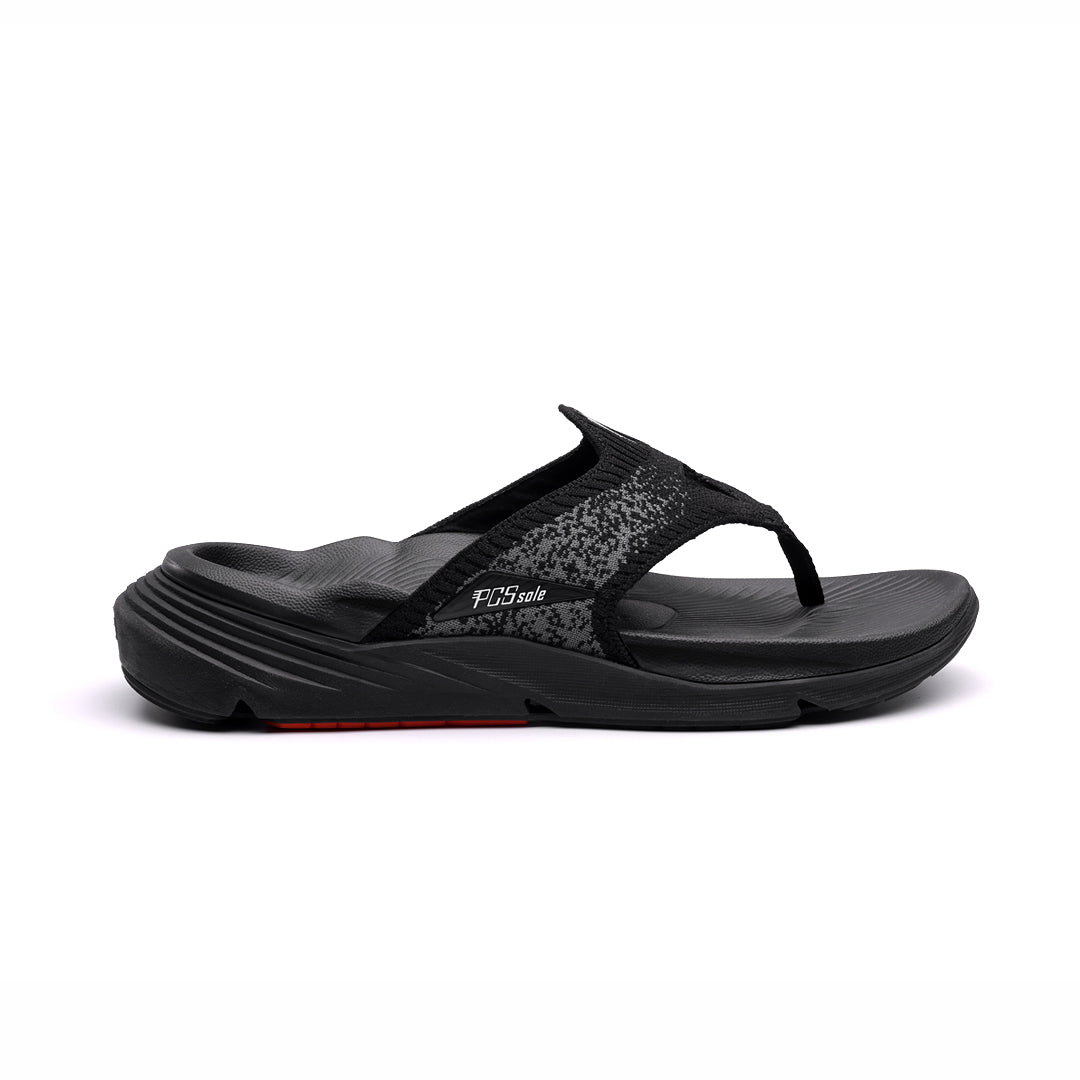

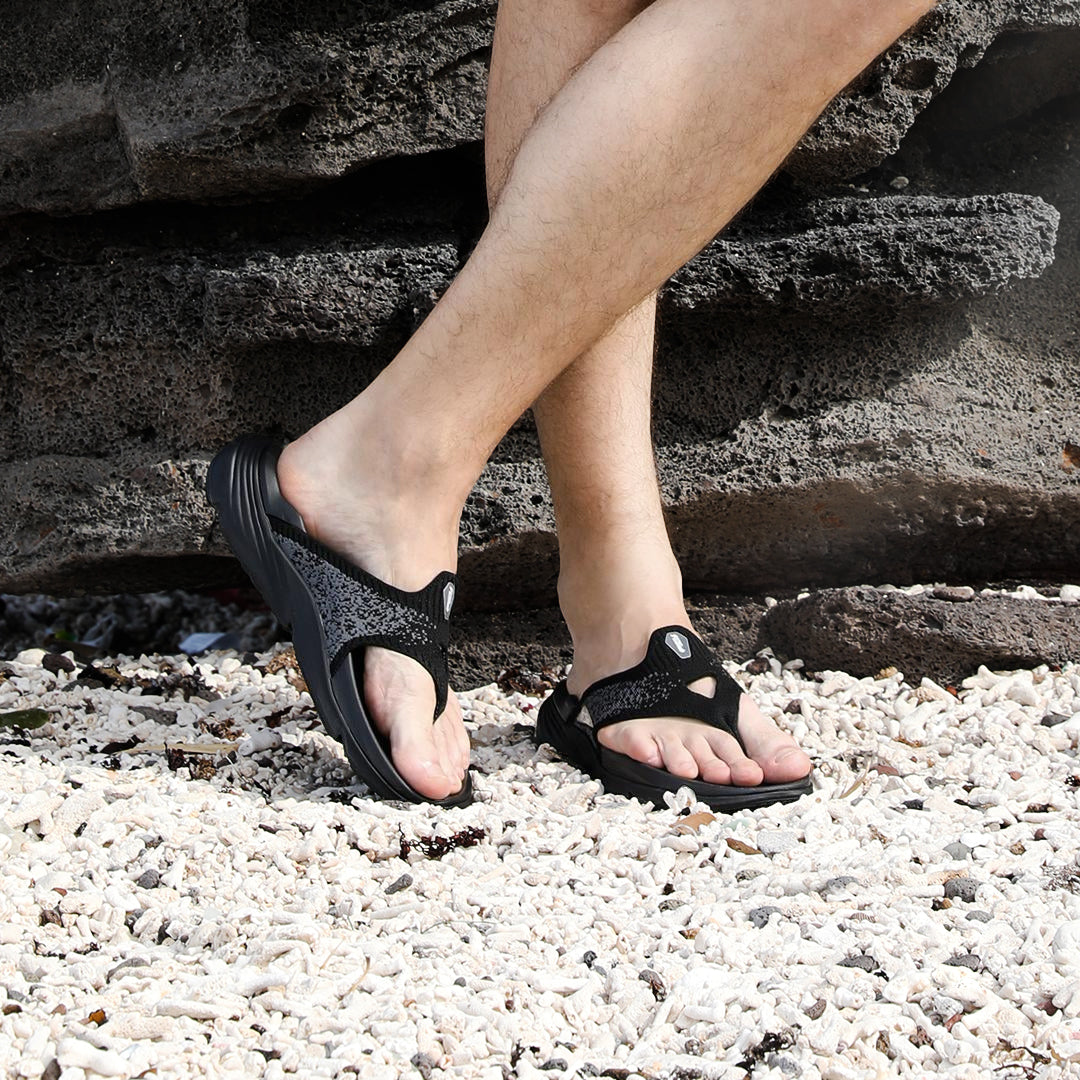
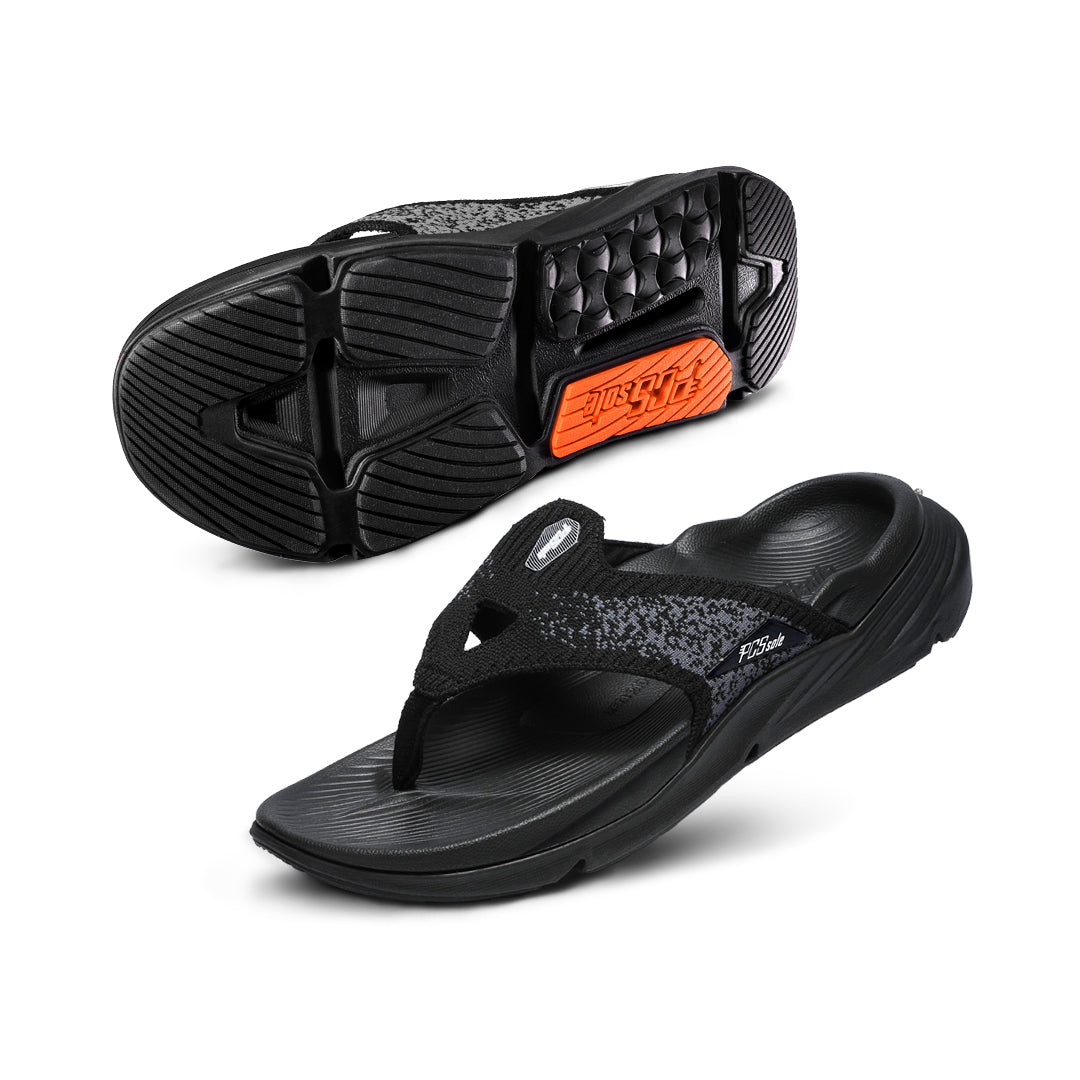
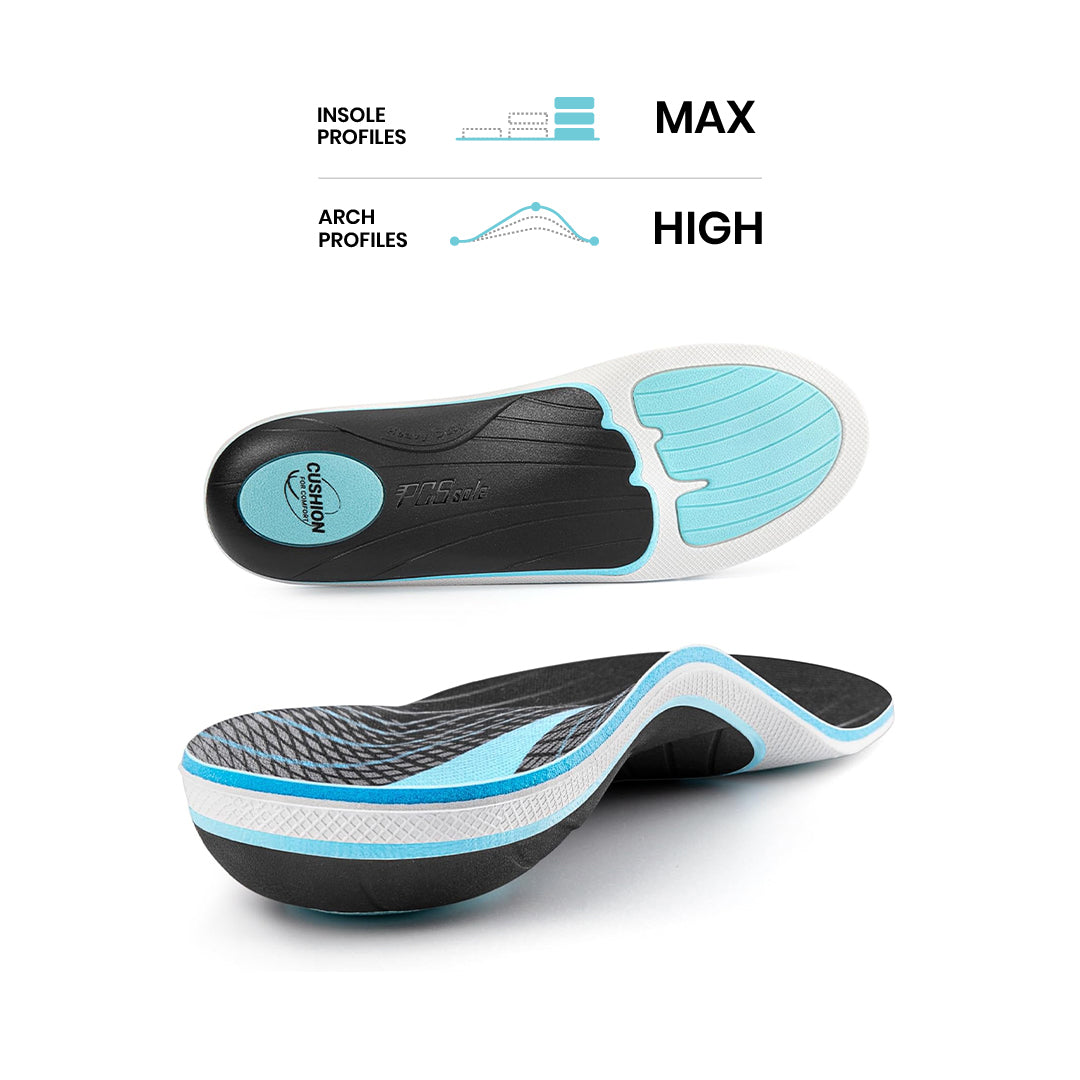
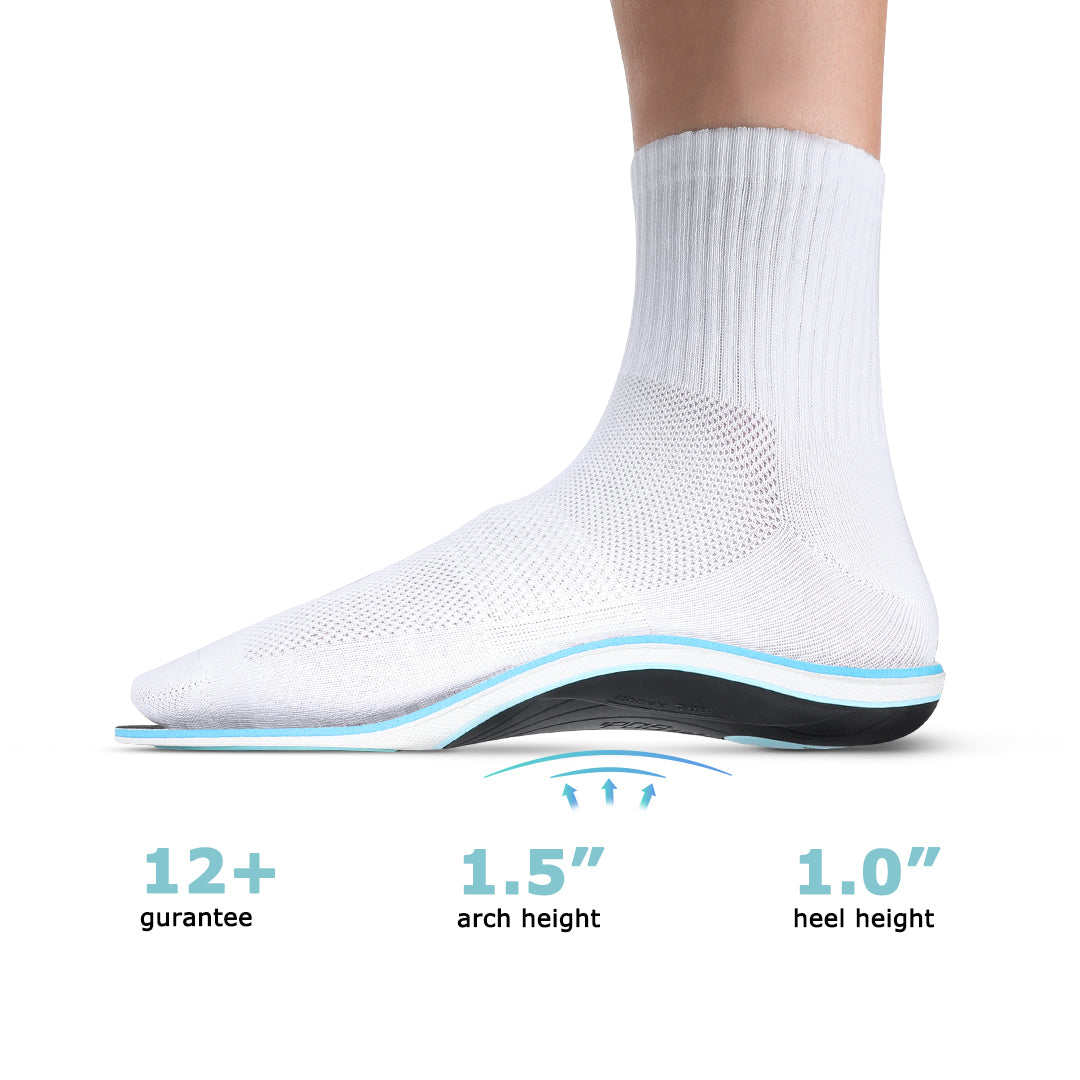
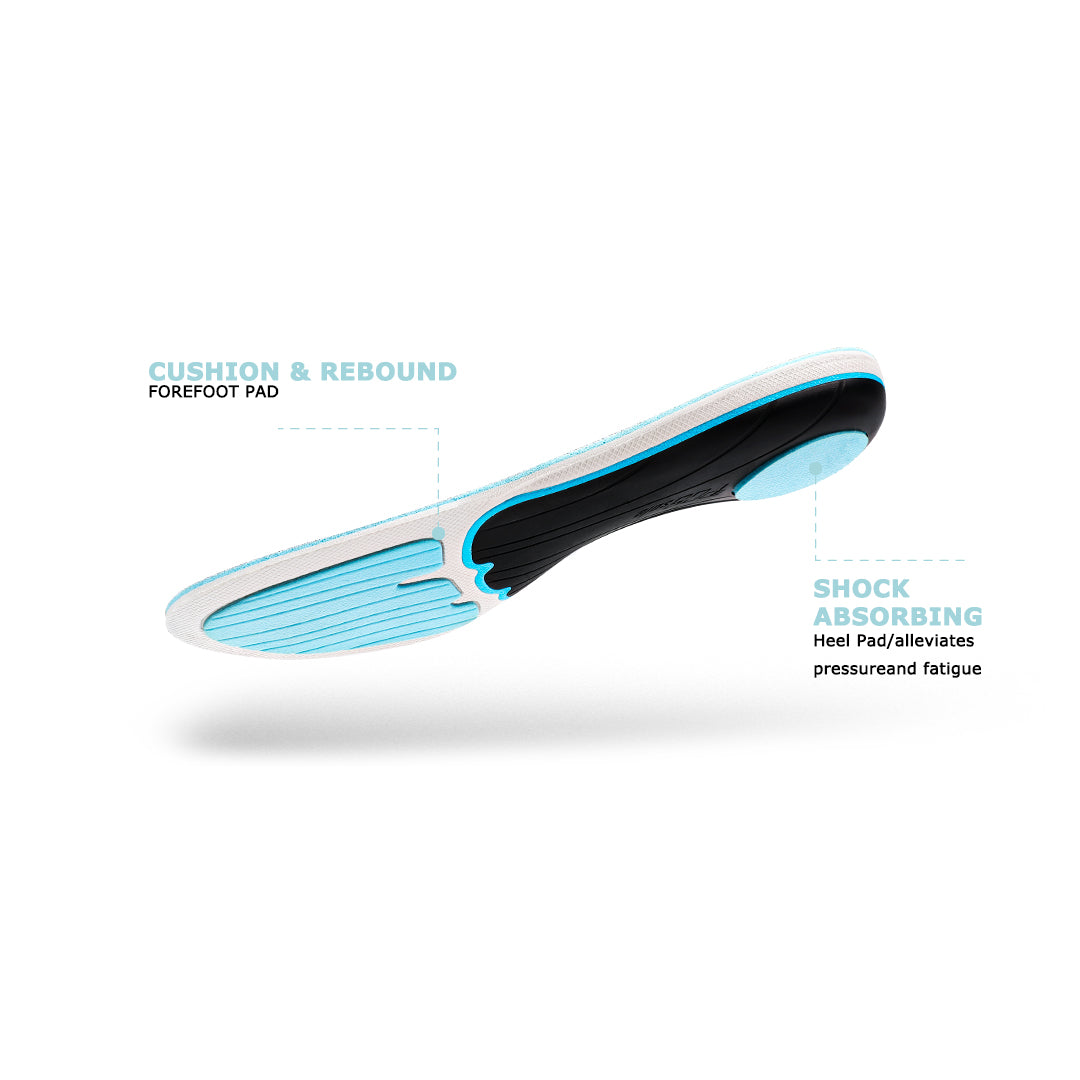
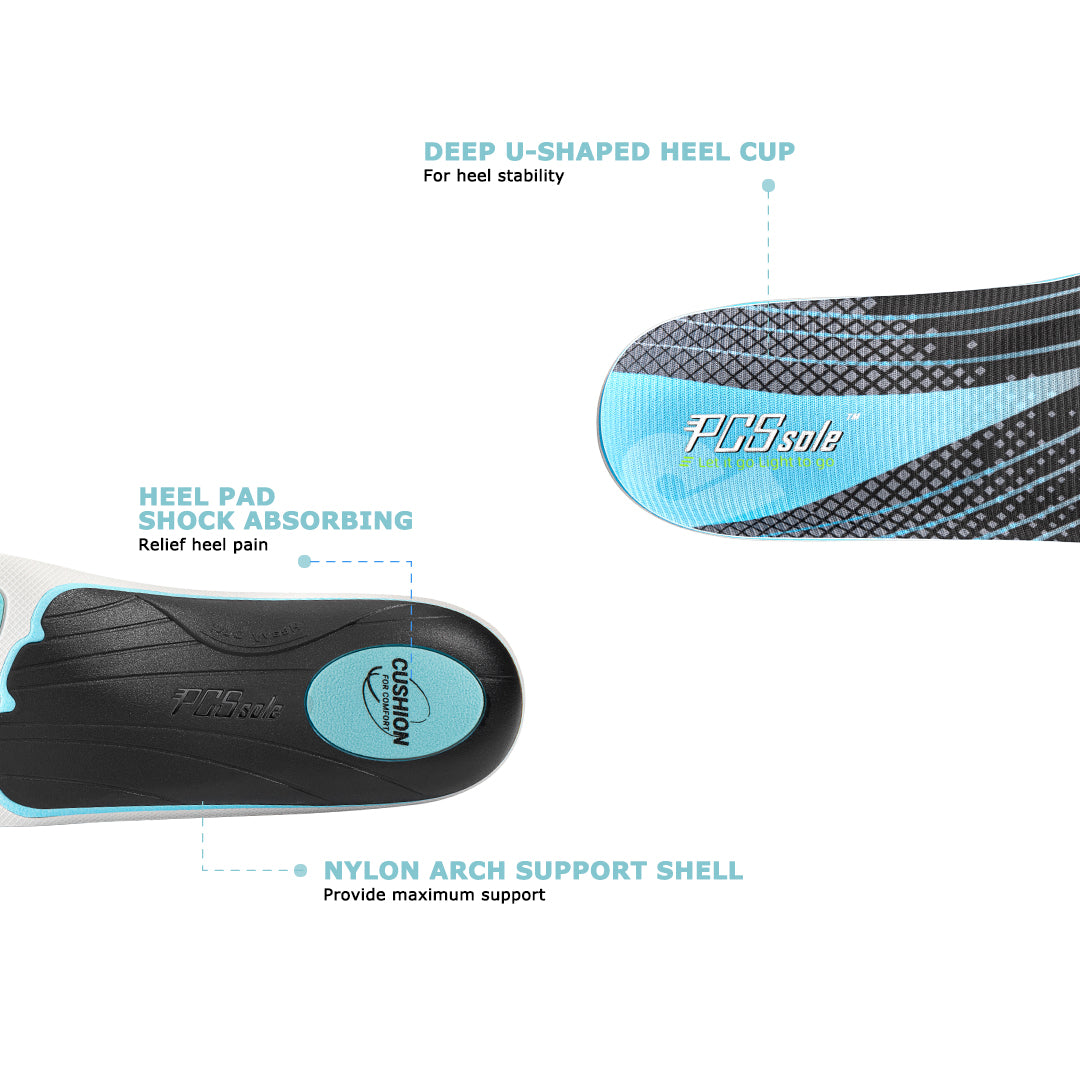
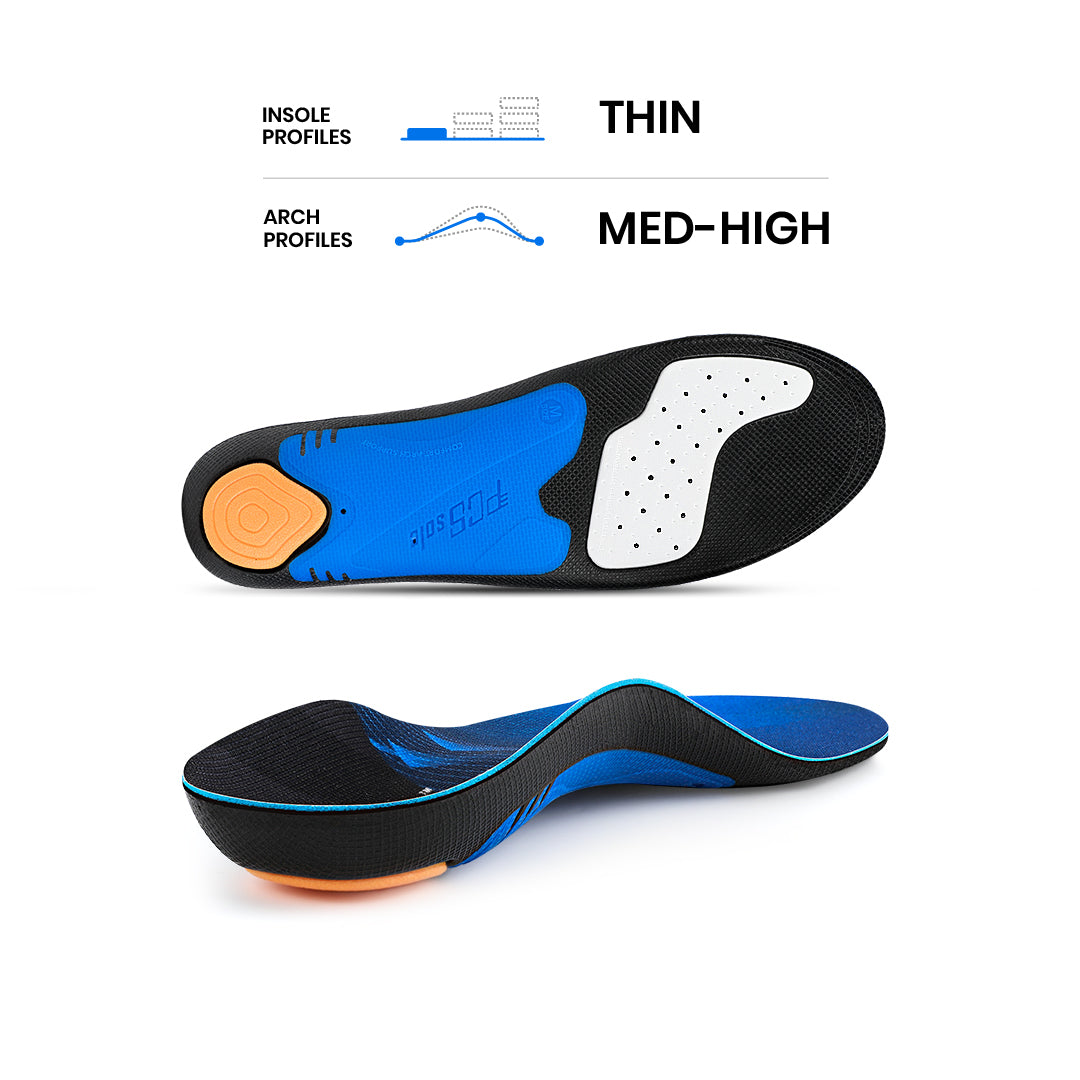
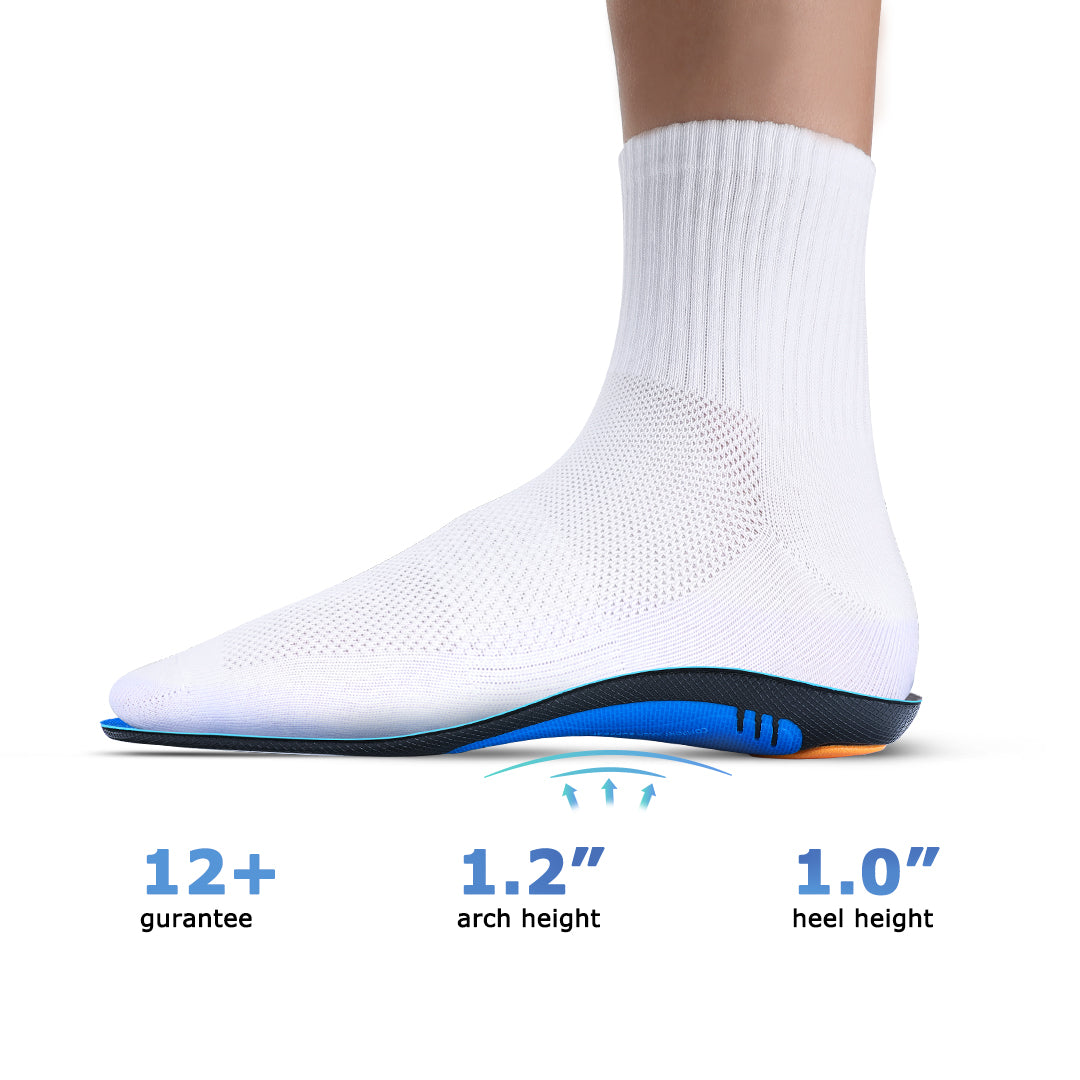
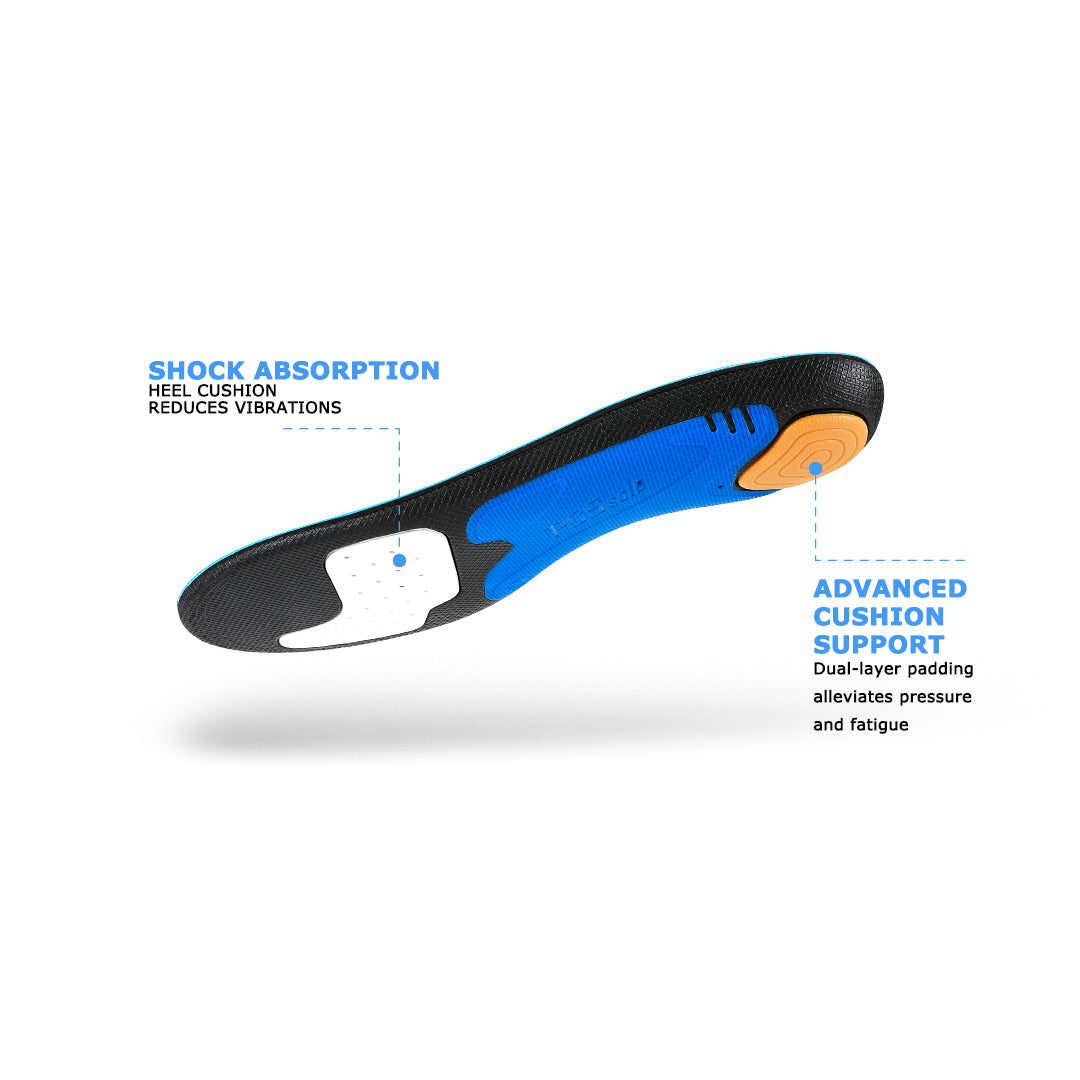
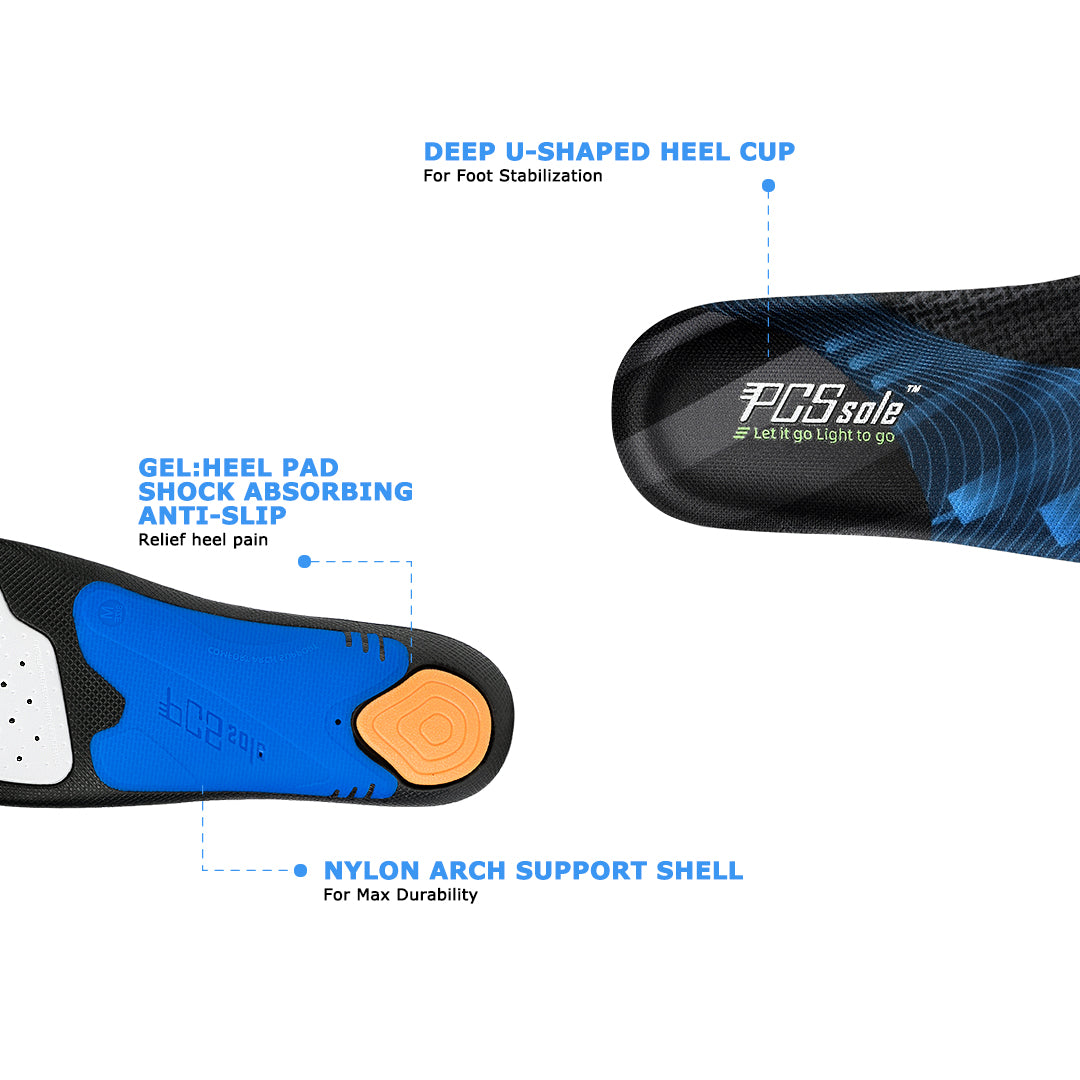
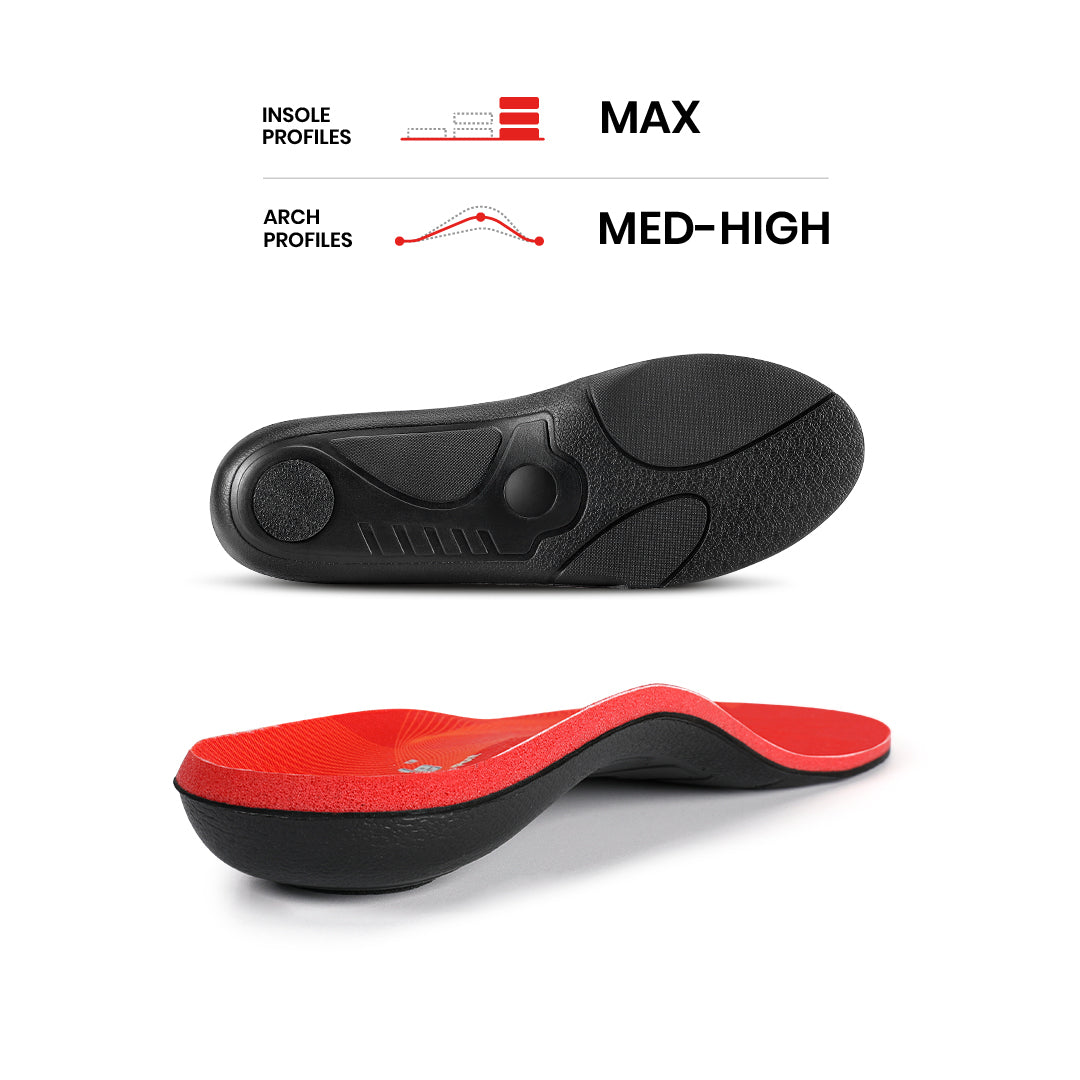
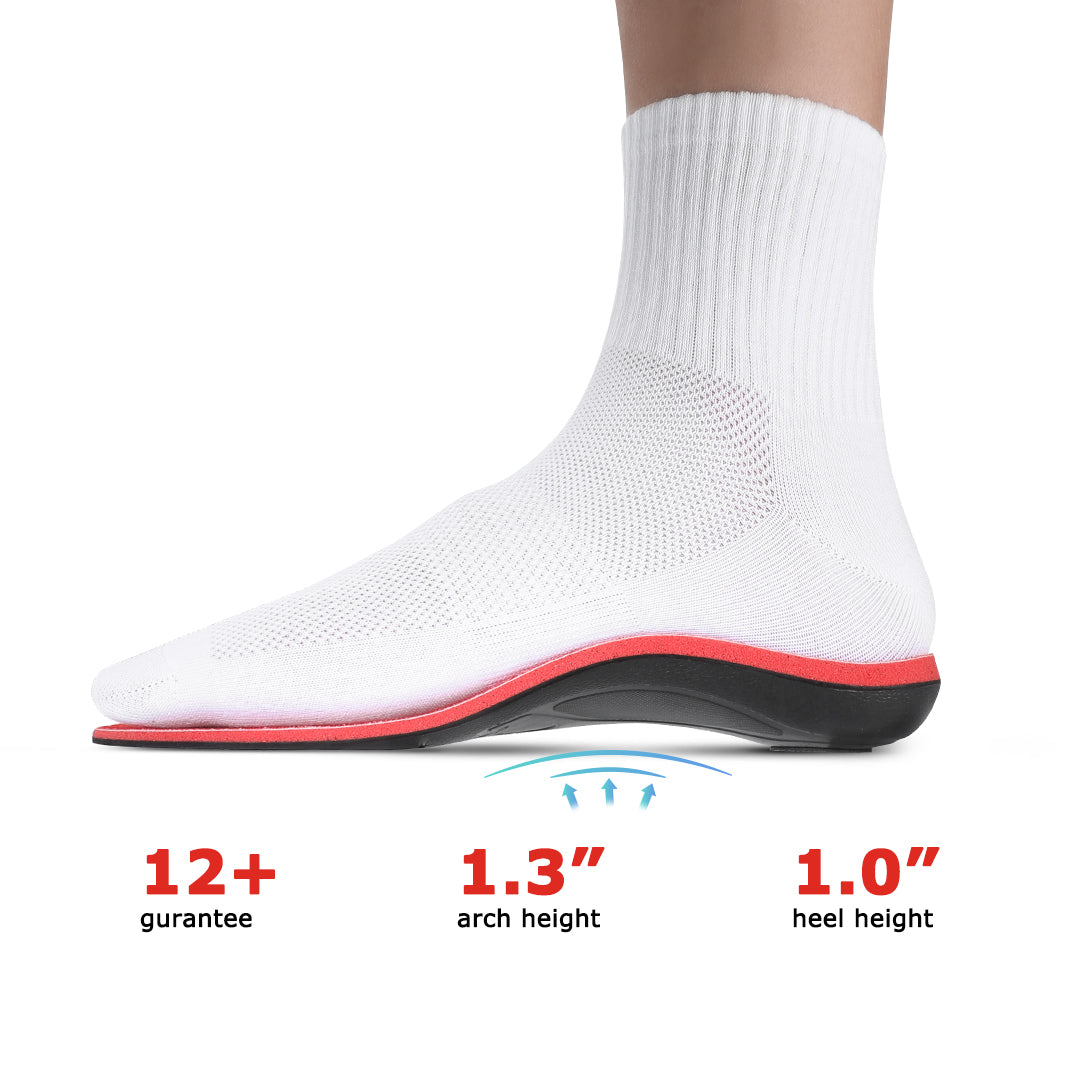
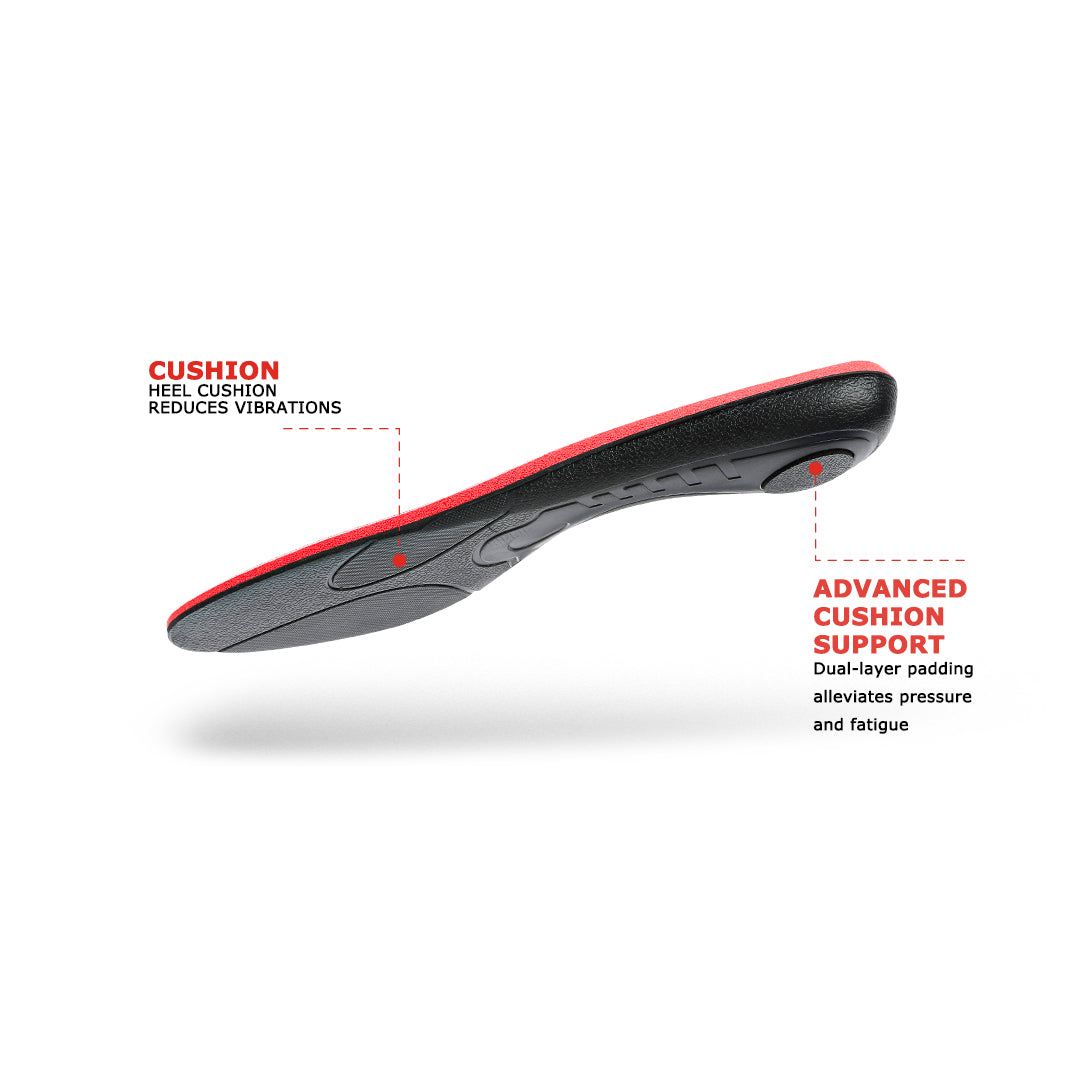





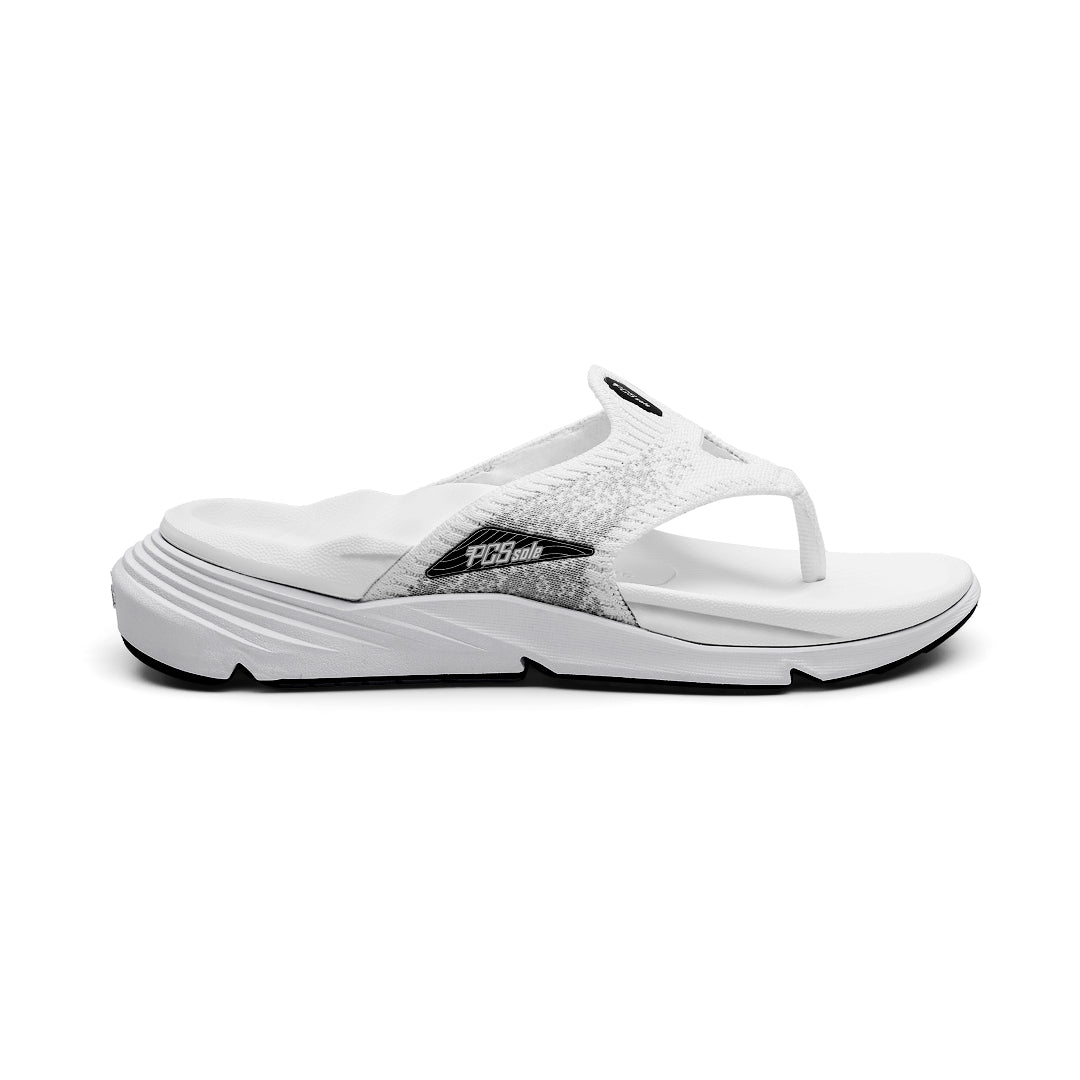

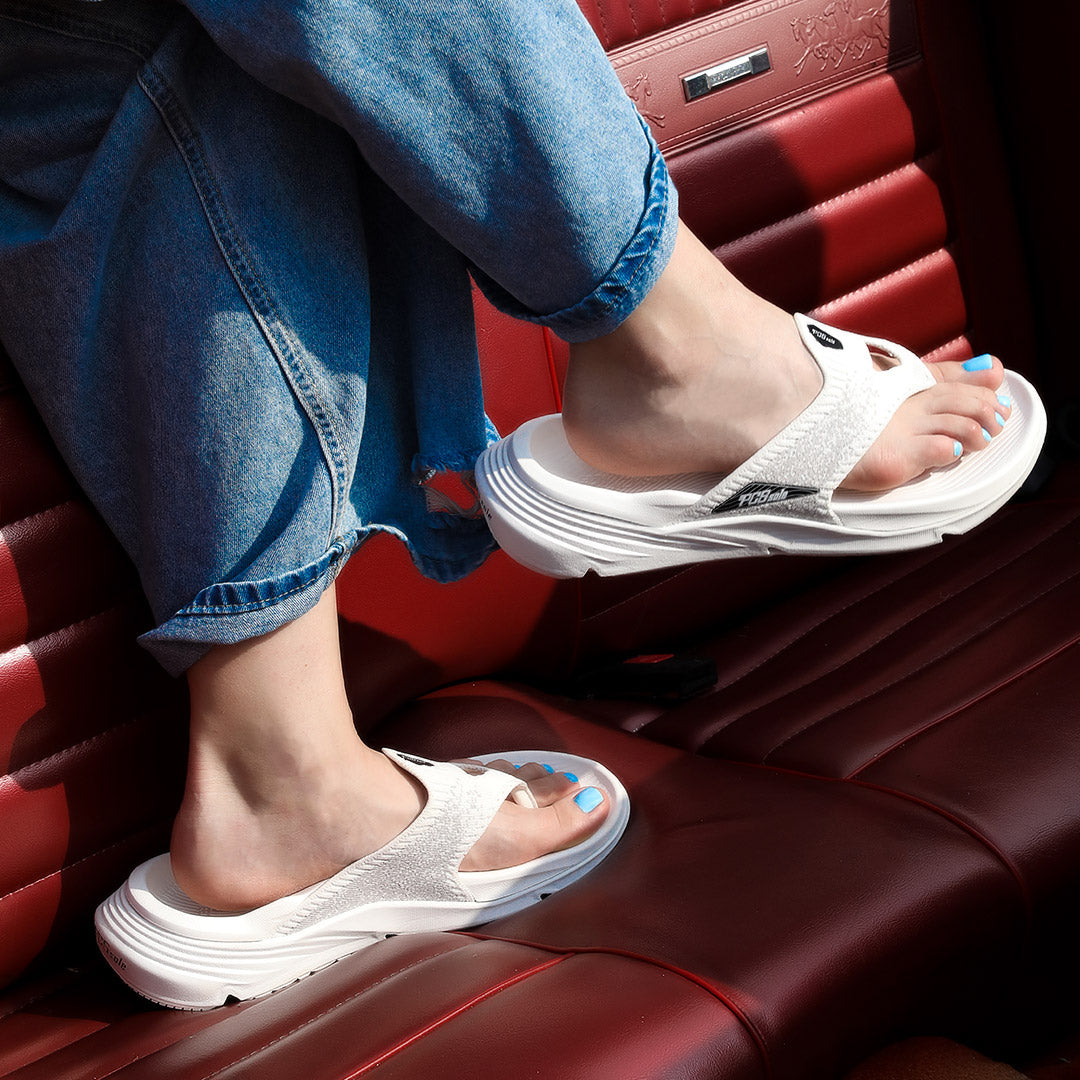
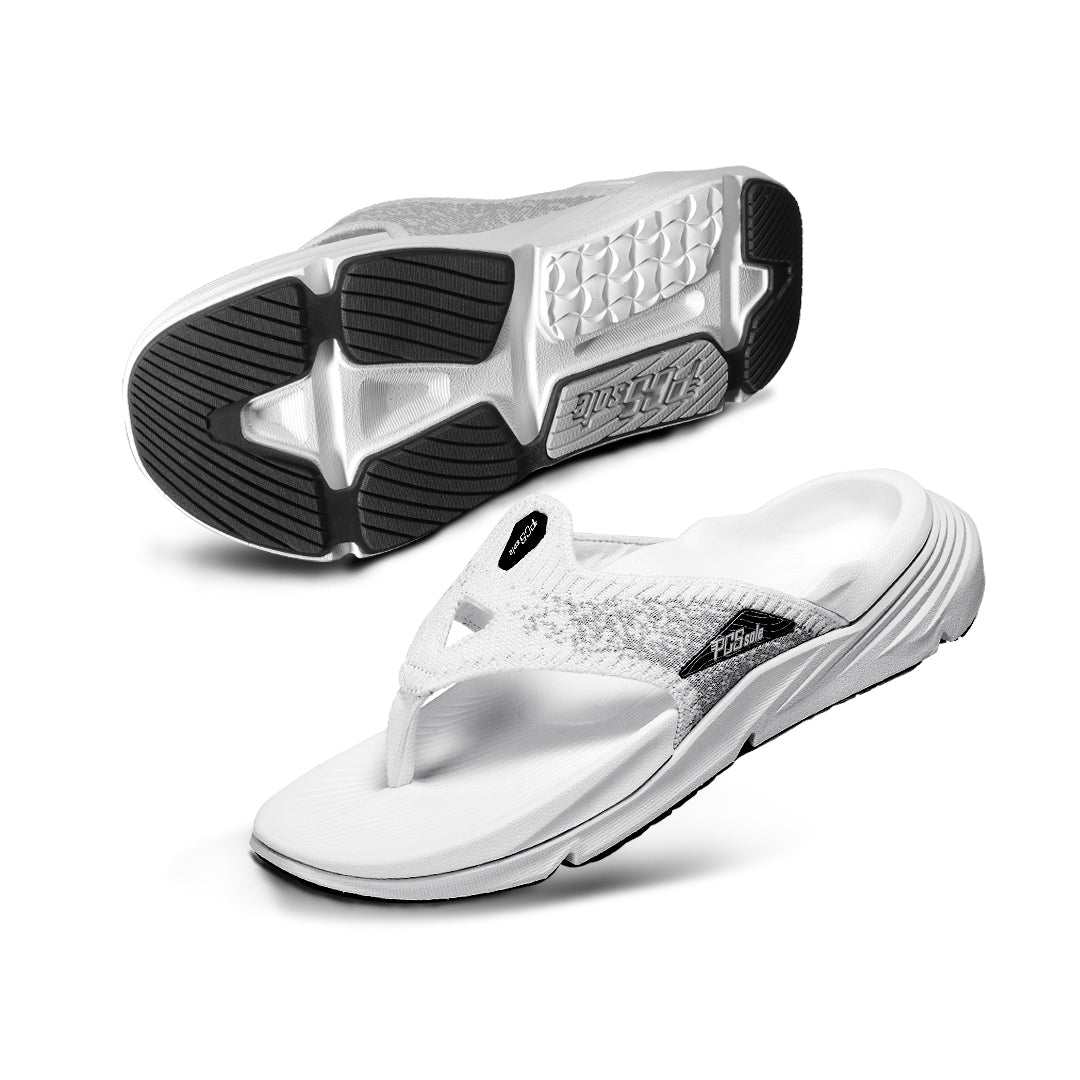
Compartir:
Best Insoles & Orthotics 2025 [Flat Feet, Plantar Fasciitis, Bunions]